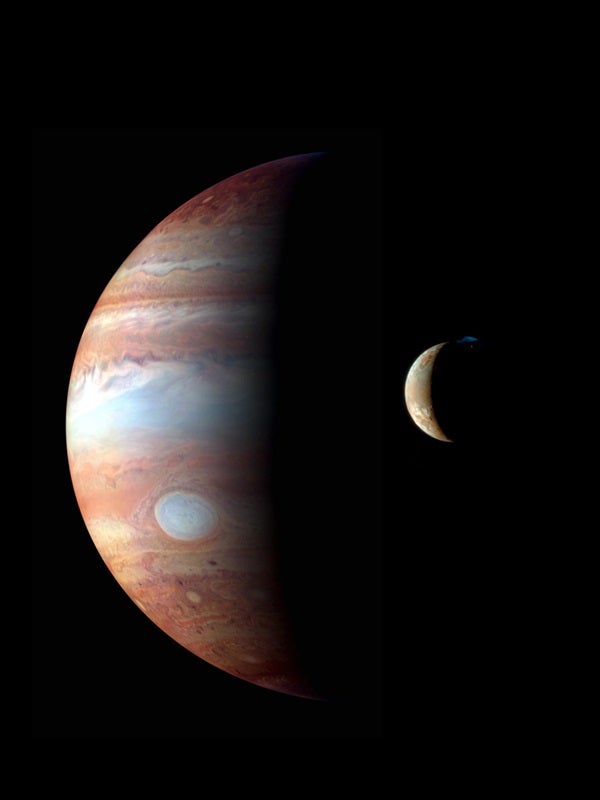The existence of a fifth giant gas planet at the time of the solar system’s formation — in addition to Jupiter, Saturn, Uranus, and Neptune that we know of today — was first proposed in 2011. But if it did exist, how did it get pushed out?
For years, scientists have suspected the ouster was either Saturn or Jupiter. “Our evidence points to Jupiter,” said Ryan Cloutier from the University of Toronto.
Planet ejections occur as a result of a close planetary encounter in which one of the objects accelerates so much that it breaks free from the massive gravitational pull of the Sun. However, earlier studies that proposed giant planets could possibly eject one another did not consider the effect such violent encounters would have on minor bodies, such as the known moons of the giant planets and their orbits.
So Cloutier and his colleagues turned their attention to moons and orbits, developing computer simulations based on the modern-day trajectories of Callisto and lapetus, the regular moons orbiting around Jupiter and Saturn, respectively. They then measured the likelihood of each one producing its current orbit in the event that its host planet was responsible for ejecting the hypothetical planet, an incident that would have caused significant disturbance to each moon’s original orbit.
“Ultimately, we found that Jupiter is capable of ejecting the fifth giant planet while retaining a moon with the orbit of Callisto,” said Cloutier. “On the other hand, it would have been very difficult for Saturn to do so because Iapetus would have been excessively unsettled, resulting in an orbit that is difficult to reconcile with its current trajectory.”










